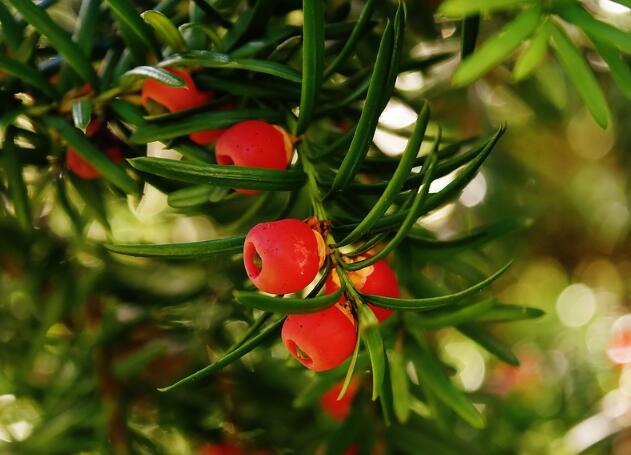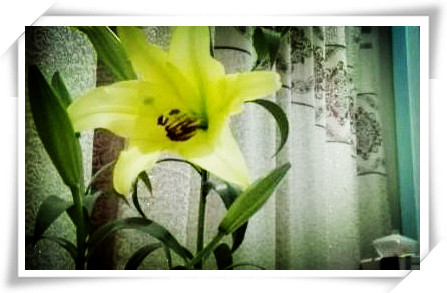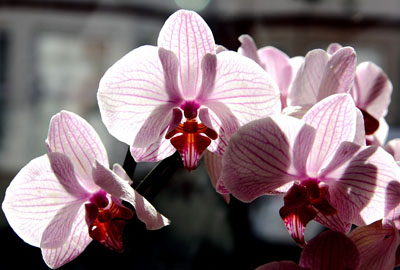Culture methods and matters needing attention of Taxus chinensis how to cultivate Taxus chinensis
The yew has the same red and beautiful fruit as the Acacia bean in the south, so it is named Taxus. Known as the healthy tree, also known as purple shirt tree, is an evergreen tree yew plant. It belongs to shallow root plant, whose main root is not obvious and lateral root is well developed. it is recognized as an endangered natural rare anticancer plant in the world, and it is a kind of national treasure plant with slow growth and few varieties in the field. It has a strong ornamental value, and its biggest feature is that it has different ornamental properties in different seasons. It is a green plant in spring and summer, the tree is tall and the stem is thin, and the branches and buds of the newborn yew are green and tender green. The branches of the adult yew are brown, and the sub-tree species are yellow, red, gray and so on. In autumn, the leaves will turn green and yellow, which is very ornamental. When it sprouts in winter, the leaves are slender and knife-shaped.

Taxus is native to the Yangtze River Basin and the south. It is warm and humid and is a strong negative slow-growing tree species. It is suitable for humus-rich, loose and fertile acid soil. The suitable growth temperature is 20: 30 ℃, and it can withstand short-term low temperature of-5 ℃, 10 ℃. In the southern yew growing in the moist mountain forest mixed land, mostly under the tall deciduous trees, not resistant to strong sunlight, seedlings to build a shade, here is a detailed introduction to how to raise the yew:
1. Soil selection of Taxus chinensis culture
Taxus should be planted in the middle and late February of early spring, and the seedlings should be dug up with soil balls, which can be planted in the shade of the garden and often planted with trees. The basin soil is made of loose, fertile acid soil with high organic content, which can be mixed with garden soil, peat and sand at 2:1:1, plus 1% rotten organic fertilizer.
two。 Fertilization methods for Taxus Culture
Potted plants should apply rotten cake fertilizer and water, and apply alum fertilizer with a concentration of 1: 10: 15 per month during the growing season. Change the basin every other year and reinforce the rotten organic fertilizer at the bottom of the basin.
From September to October in autumn, base fertilizer can be applied, 50 kilograms of mature animal manure per plant, and compound fertilizer containing nitrogen, phosphorus and potassium can be applied in early spring, 100 grams per plant, or 500 grams of superphosphate.
3. Watering method of Taxus Culture
Taxus mairei likes to be wet and is afraid of waterlogging. Watering was carried out in the budding period, and the sloping land with low groundwater level was watered 2 or 3 times a month. Rain Water should do a good job of drainage and waterproofing for a long time in summer. There should be less watering in autumn, and it is appropriate for the soil not to be dry or wet. After the leaves turn purple-green before winter, water them again.
Potted plants can be watered every 2-3 days in spring and once in the morning in summer. If the potted soil is still too dry, spray it again with a fine-hole spray pot in the evening, which not only flushes the leaves and increases the humidity of the ambient air, but also wets the remaining water on the basin again, which is good for plant absorption. Water every 3-4 days in autumn, if it rains continuously, you can also water it once a week, as long as the basin is moist. Watering less in winter, pot plants in the garden can be washed with clean water every 15 to 20 days, leaving the remaining water to moisten the basin soil.
Taxus mairei likes to be moist, but it is afraid of waterlogging, and it is not cultivated anywhere, so it is necessary to replenish water at any time. According to the actual situation of cultivation in various places, there is little Rain Water in spring, and it is in the period of plant germination, so it is necessary to carry out irrigation, especially in sloping land or places with low groundwater level, to irrigate 2 to 3 times a month to keep the soil moist. At the same time, it should be combined with fertilization to make the water thoroughly, so that the soil will be fertile and moist for a long time. There are many Rain Water in summer, plants cultivated in low-lying areas should dig ditches early, do a good job of drainage and waterlogging prevention, and irrigate in case of summer drought to ensure fruit growth. There should be less irrigation in autumn, and it is appropriate for the soil not to be dry or wet. Before winter, after the leaves turn purple-green, they will be irrigated once more, and then they will not be watered. If the winter climate is particularly dry, water can be irrigated in early spring to make it grow earlier.
4. Temperature requirements of Taxus chinensis culture
Taxus chinensis var. mairei can withstand semi-overcast, severe cold, strong adaptability, and generally can withstand the low temperature of-25 ℃ 15 min. Develop a growth habit that is not afraid of the cold, and the grower should meet its temperature needs after knowing its habits. Taxus mairei cultivated in Northeast China is in its vigorous growth period from April to October. The temperature in these areas is 18: 32 ℃ during the day and 10: 25 ℃ at night. The other plants are dormant or semi-dormant for half a year.
Taxus chinensis var. mairei likes warmth. The most suitable growth period is from March to November, and the most suitable growth temperature is 20-30 ℃. Under this temperature, plant vegetative growth and reproductive growth are carried out at the same time. If the management of water and fertilizer is proper and the sun is soft, the plants will not only flourish, but also have many flowers and fruits, and the ornamental value will be very high. Taxus chinensis var. mairei has good cold resistance. The plants growing in Guizhou, Sichuan and southern Shaanxi can also resist the temperature as low as-10 ℃ in some mountainous areas in winter. Therefore, there is no problem of overwintering in introduction and cultivation in the Yangtze River basin and its south.
5. Light requirements of Taxus chinensis culture
Taxus mairei originally grew in the mountain areas with warm and cool summer, abundant rainfall, humid air and cold winter, where the temperature difference in the four seasons was large and the sunshine time was long. The growth habits and organs of Taxus mairei adapted to this ecological environment. Therefore, if other places want to cultivate this plant, they should strive to create a natural ecological environment close to the original place of growth, so that it can be cultivated well.
Taxus chinensis var. mairei is a strong and negative slow-growing tree species, so it likes a moist and warm ecological environment and is not resistant to strong sunlight. Seedlings cultivated with seeds should be sheltered in areas with strong light. Cultivated in the plain area, it can be planted with tall trees, and the cultivation in front and behind the house should also be in shady places, because the original growing places of Taxus chinensis var. mairei are mixed forests in humid mountainous areas, and most of them grow under tall deciduous trees. In summer with strong sunshine, there are shaded branches and leaves of big trees, fallen leaves in autumn and winter, and sufficient light, which is just suitable for the growth of evergreen yew. After the growers know this growth habit, when introducing and cultivating, it is best to choose a suitable growth environment to meet the light requirements of the plant.
6. Matters needing attention in Taxus Culture
The main results are as follows: (1) Taxus should be cultivated at the end of winter and before sprouting in early spring, and the big seedlings should carry soil balls. In the daily maintenance and management, we should often loosen the soil, weed, fertilize, irrigate, and spread the litter around the roots, so as to maintain the acidity of the soil. Resistant to pruning, it can be pruned in late autumn and early winter to maintain good tree posture; at the same time, withered branches, diseased branches, broken branches and cross branches can be cut off.
(2) when watering the potted yew, we must pay attention to the water quality. The water used in flowerpots is natural Rain Water, followed by clean and flowing river and lake water. If it is necessary to use well water, we must pay attention to the water quality, especially in the northern area, the alkali is often too heavy, which is not conducive to the growth of yew. The second is the water temperature, the water temperature of watering potted flowers should be basically close to the air temperature, and too low and too high is disadvantageous to its growth, especially when watering with tap water in summer, be sure to use vats, ponds and other containers to store water for 24 hours and 48 hours before use, otherwise it will cause physiological wilting of plants; at the same time, this physiological obstacle is often difficult to save.
7. Breeding methods of Taxus mairei
(1) sowing and propagation: the seeds of Taxus chinensis var. mairei have a long dormant period because of the low permeability of the seed coat, which hinders the passage of gas and water, so the seeds should be stratified at low temperature or in the open air before sowing. Kunsha was stored for 15 months, and the seeds were not sown until the seeds broke their breasts and showed more than 80% white. Seedlings need proper shade, slow growth, need to leave a bed for 2 years before transplanting, transplanting with soil balls. The height of 1-year-old seedlings is only 8~lOcm. The methods of open-air mixed sand storage of Taxus seeds are as follows: choose the leeward cool flat ground without water accumulation, dig a pit, deep 80cm, long and wide depending on the number of seeds.
The sterilized yew seeds should be evenly mixed according to the proportion of 1 seed and 3 parts of river sand, and the humidity of river sand should be dispersed without coming out of the water by hand. After the pit is dug, first lay a layer of pebbles about 12cm thick at the bottom of the pit. Then lay 6cm thick moist fine sand, insert a bamboo tube with holes per 50cm in the pit, and then spread the mixed sand seeds in the pit with a thickness of 30cm, cover it with wet sand, and then cover the soil with 8cm thick to form a roof ridge. During storage, cover the pit with a bamboo curtain to cover the shade. Dig a drainage ditch around the pit to prevent the seeds from mildew caused by stagnant water in the pit, and pay attention to turning it every other month.
(2) Cuttage propagation: both softwood cuttings and hardwood cuttings of Taxus chinensis can take root, and the rooting rate of softwood cuttings is higher than that of hardwood cuttings. Soaking cuttings in naphthalene acetic acid solution of lOOmg/L for 3 hours is beneficial to rooting.
Tips:
1. Less sun, less water, less fertilizer.
two。 Please do not put the bonsai in the air conditioning outlet or too close to the heating.
3. Bonsai can be moved outdoors or balcony for two days every half month (it is best to choose cloudy or rainy days), which is more conducive to its natural growth.
4. Never pour tea water or litter into the basin.
5. The ground is warm in winter in the north, so bonsai should be put on a suitable pot rack.
6. When new buds are sprouted in spring, there will be some metabolic phenomena (changing leaves, falling leaves).
Time: 2019-04-13 Click:
- Prev

Symptoms and control methods of lily leaf scorch disease of herbaceous bulbous plants
Lily is also called Qiangshu, Fanchiu, Shandan, Daoxian, Zhongmai, Zhongting, Moro, Zhongxiang, Zhongfenghua, Lily garlic, Dashifu garlic, garlic naoshu, night flower, etc. It is a perennial herbaceous bulbous plant belonging to Liliaceae, native to China, mainly distributed in eastern Asia, Europe, North America and other temperate regions of the Northern Hemisphere.
- Next

How to raise Phalaenopsis? What do you need to pay attention to?
Phalaenopsis is favored by flower friends because its flowers are like dancing butterflies. It has more than 70 varieties and is widely planted indoors and gardens. How to cultivate Phalaenopsis? What do you need to pay attention to? Phalaenopsis is mainly produced in humid Asia.
Related
- Fuxing push coffee new agricultural production and marketing class: lack of small-scale processing plants
- Jujube rice field leisure farm deep ploughing Yilan for five years to create a space for organic food and play
- Nongyu Farm-A trial of organic papaya for brave women with advanced technology
- Four points for attention in the prevention and control of diseases and insect pests of edible fungi
- How to add nutrient solution to Edible Fungi
- Is there any good way to control edible fungus mites?
- Open Inoculation Technology of Edible Fungi
- Is there any clever way to use fertilizer for edible fungus in winter?
- What agents are used to kill the pathogens of edible fungi in the mushroom shed?
- Rapid drying of Edible Fungi

